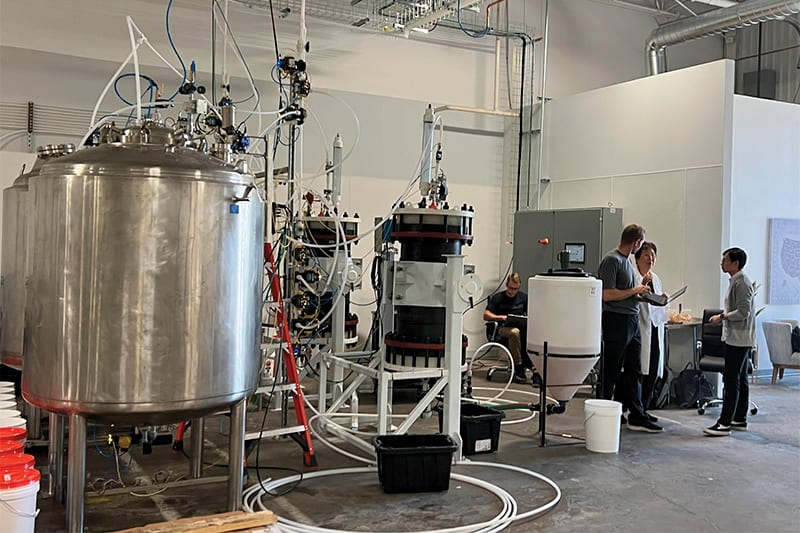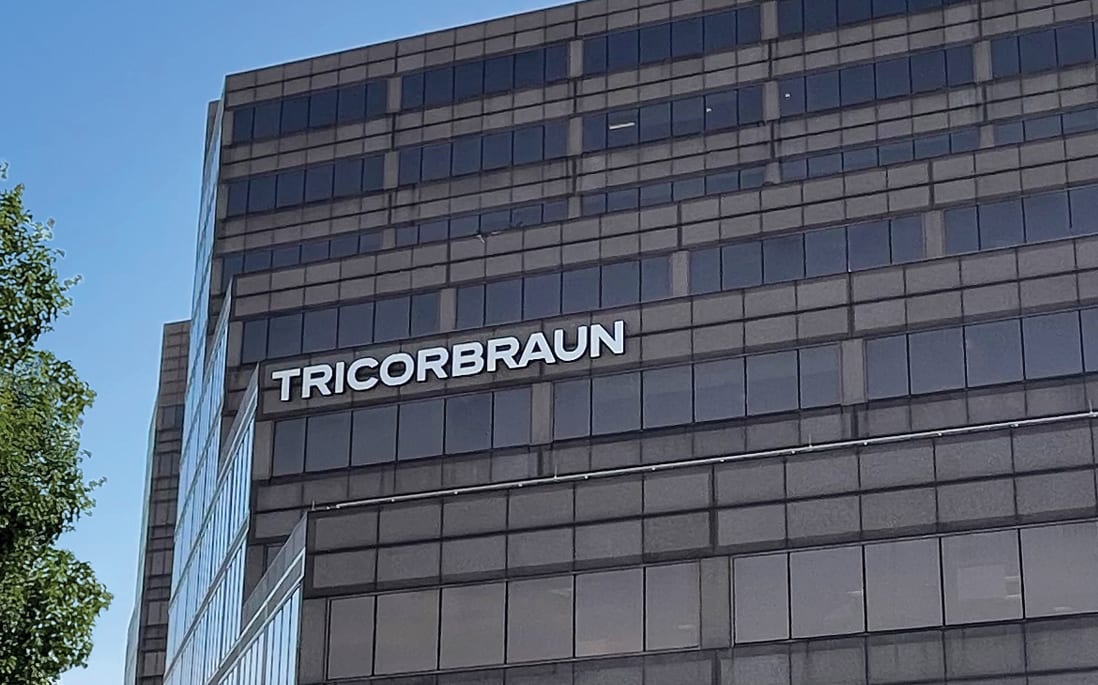
news & trends
C&GM INDUSTRY NEWS:
- Joint venture of German trade fair companies
- Lithoz, ORNL agree to explore additive manufacturing tech
- A hydrogen first: mass production of a glass spirits bottle
- Partnership makes use of Purdue rare earths technology
- ORNL and city-owned power company collaborate on research
- TricorBraun acquires German glass maker
- New York college launches Center for Advanced Semiconductor Technologies
New supply chain strategies aim to secure access to critical resources
Supply chains have been top of mind for governments during the last few years as the COVID-19 pandemic, extreme weather events, and war impacted the global transport of goods. And only a few weeks into 2024, supply chains are again grabbing headlines as hundreds of ships detour an extra 4,000 miles around Africa to avoid drone and missile attacks in the Suez Canal.
In response to these global transport disruptions, many governments are implementing new programs to ensure continued and secure access to critical resources, including several in the past few months. Learn about some of these recently implemented programs in the sections below
ADVERTISEMENT
US: Dozens of new actions aim to strengthen domestic supply chains
In November 2023, the White House issued a fact sheet announcing almost 30 new actions the Biden–Harris administration is taking to strengthen U.S. supply chains.
Included in these actions is the creation of the Council on Supply Chain Resilience. This Cabinet-level council, co-chaired by the National Security Advisor and National Economic Advisor, formalizes and expands on the Supply Chain Disruptions Task Force, which was created in 2021 to resolve short-term supply and demand discontinuities.
The Council on Supply Chain Resilience brings together more than a dozen of the nation’s top federal officials directly involved in industrial policy. One of the Council’s tasks will be to conduct a quadrennial supply chain review. The first review, due by Dec. 31, 2024, will update criteria on industries, sectors, and products defined as critical to national and economic security.
In addition to the Council, several new Centers to monitor existing and emerging supply chain risks were announced. For example, the Department of Commerce’s Supply Chain Center is designed to be the analytic engine for supply chain resilience policy action within the U.S. government. It will integrate industry expertise and data analytics to develop innovative supply chain risk assessment tools.
On the other hand, the Department of Homeland Security’s Supply Chain Resilience Center will collaborate with the private sector to better secure U.S. supply chains. The Center plans to host at least two table-top exercises in 2024 to test the resiliency of critical cross-border supply chains with other U.S. federal agencies, foreign governments, and industry partners.
Also coming up in 2024 is the new Supply Chain Data and Analytics Summit, convened by the Department of Commerce. In addition to gathering expert input on supply chain risk assessment models and tools, the summit will assess data availability, utility, and limitations and consider actions to improve data flows.
EU: Critical Raw Materials Act aims to reduce reliance on China
In November 2023, the European Council and the European Parliament reached a provisional agreement on the Critical Raw Materials Act.
Proposed by the European Commission in March 2023, the Critical Raw Materials Act is one of the flagship legislative initiatives of the Green Deal Industrial Plan, which was announced in February 2023. It aims to reduce reliance on China for the minerals essential to emerging green and digital technologies.
The provisional agreement kept the overall objectives of the original proposal but strengthened several elements, for example, by adding aluminum to the list of strategic raw materials. The act is expected to be finalized and go into effect in early 2024.
UK: Critical Imports and Supply Chains Strategy aims to secure flow of critical imports
On Jan. 17, 2024, the U.K. government announced the launch of its new Critical Imports and Supply Chains Strategy.
This strategy builds on several recent programs, specifically the Integrated Review Refresh, advanced manufacturing plan, and the semiconductors, batteries, and critical minerals strategies. It sets out how the U.K. government will work with business and international partners across five priorities to enable the efficient and reliable flow of critical imports.
- Making the U.K. government a center of excellence for supply chain analysis and risk assessment.
- Removing critical import barriers to support the U.K.’s business-friendly environment.
- Building the U.K.’s response to global supply chain shocks.
- Ensuring the U.K. can adapt to long-term trends.
- Expanding collaboration between government, business, and academia.
To achieve these priorities, the U.K. government will establish the Critical Imports Council, which will give companies and government officials a platform through which to collaboratively identify import risks and develop action plans.
String-based extraction could revolutionize lithium production
With demand for certain minerals increasing as more countries transition to an electrified economy, focusing only on the largest deposits of minerals is no longer a sustainable approach.
Lithium is at the center of these efforts to diversify critical mineral supply chains. In the past decade, numerous groups worked to develop techniques that can extract lithium from sources with low concentrations, such as oilfield brines and seawater. These techniques are based on various processes, including adsorption, ion-exchange, electrodialysis, and solvent-extraction. But they face some major barriers in terms of selectivity, energy and chemical uses, and high cost.

White salt crystals form on the surface of a new, string-based approach for concentrating, separating, and harvesting lithium from saltwater.
Credit: Bumper DeJesus, Andlinger Center for Energy and the Environment
In September 2023, researchers at Princeton University, along with colleagues at the University of Maryland, published a paper describing a new passive method for fast and selective extraction of lithium from saltwater. Their method uses a set of porous, twisted cellulose fibers that have a water-loving core and a water-repelling surface. When the ends are dipped in a saltwater solution, the water travels up the strings through capillary action and then quickly evaporates. The evaporated water leaves behind salt ions, such as sodium and lithium. As water continues to evaporate, the salts become increasingly concentrated and form crystals that can be harvested.
Due to the different physical properties of sodium and lithium, the salts reach their saturation points at different locations along the twisted fibers. Sodium, with low solubility, crystallizes near the bottom, while highly soluble lithium crystallizes near the top. This natural separation allows the lithium and sodium to be collected individually, a feat that otherwise would require the use of more chemicals.
Though currently only a lab-scale process, the researchers estimate that the method, if advanced to industrial scale, could accelerate the evaporation process by more than 20 times compared to traditional evaporation ponds. It could also cut the amount of land needed by more than 90% of current operations.
The paper, published in Nature Water, is “Spatially separated crystallization for selective lithium extraction from saline water” (DOI: 10.1038/s44221-023-00131-3).
Corporate Partner news
- HWI and Calderys bring an extended portfolio of high-temperature solutions to customers: In February 2023, Calderys and HWI were united under single ownership and became the Calderys Group. The new Group began a program to share technologies, transferring a selection of Calderys solutions in the Americas to HWI and bringing a selection of HWI products to EMEA and APAC. Read more.
- Lithoz joins Japanese technology network for high-performance 3D-printed ceramics: Japanese ceramic companies AS ONE, Mitsui Kinzoku, and Yugyōkuen Ceramics chose Lithoz as a key partner in driving growth and advancement in the Japanese additive manufacturing community. As initiative leader, AS ONE will work with Mitsui Kinzoku and Yugyōkuen Ceramics as contract manufacturers and Lithoz as technology provider. Read more.
- McDanel announces name change to support expansion of material capabilities: McDanel transitioned its name from McDanel Advanced Ceramic Technologies to McDanel Advanced Material Technologies. This decision is aligned with McDanel’s strategic plan to expand its technology portfolio, historically focused on high-purity tubular advanced ceramics, to include a broader range of material technologies. Read more.
- Saint-Gobain certified ‘Top Employer Global’ for ninth year: Saint-Gobain was awarded the “Top Employer Global” certification for the ninth consecutive year. Only 17 companies globally hold this international certification. Among the 20 criteria analyzed by the Top Employers Institute, Saint-Gobain made significant progress in the past year on 13 of them, with eight showing an increase of 3% or more. Read more.

Caption.
Credit:
Text
Headline
Text
C&GM Industry News
Joint venture of German trade fair companies
Two of Germany’s biggest trade fair companies, Messe Düsseldorf and Deutsche Messe AG, agreed to pool their expertise in the Turkish market and will each hold a 50% share in Hannover Messe Ankiros Fuarcılık A.S. in Ankara. The venture organizes Ankiros/Turkcast, a large trade fair for the metallurgy and foundry industries, and Aluexpo, the largest aluminum trade fair for the Eurasian region. Messe Düsseldorf acquired 50% of the shares in Hannover Messe Ankiros Fuarcılık A.S., making both German trade fair companies equal business partners.

Ankiros/Turkcast is a leading Eurasian trade fair.

Lithoz, ORNL agree to explore additive manufacturing tech
Lithoz GmbH (Vienna, Austria) and Oak Ridge National Laboratory in Tennessee signed a research and development agreement to use Lithoz’s 3D printing technology to explore the processing and additive manufacturing of nonoxide ceramics. The goal of the agreement is to develop technology to shape nonoxide ceramics with high-refractive indexes, such as silicon carbide, for use in extreme temperature applications and to scale up production of ultrahigh-temperature ceramic parts to an industrial level.

The Lithoz 3D printer uses laser slurry drying, or net shaping, technology.

A hydrogen first: mass production of a glass spirits bottle
Family-owned spirits company Bacardi (Hamilton, Bermuda) says it completed the world’s first commercial production fueled by hydrogen of a glass spirits bottle. Bacardi worked with Slovenia-based glassmaker Hrastnik1860 to develop the technology that powered a glass furnace with hydrogen as its primary energy source. The trial produced 150,000 70cl glass bottles for spirits maker St. Germain. Hydrogen contributed more than 60% of the fuel for the glass furnace, cutting greenhouse gas emissions by more than 30%.

Bacardi operates production facilities in 11 countries and territories.

Partnership makes use of Purdue rare earths technology
Fishers, Ind.-based ReElement Technologies is partnering with Purdue University to use the university’s patented rare earths technology. The technology uses ligand-assisted chromatography for separation and purification of rare earths and other critical elements from coal, coal byproducts, ores, recycled permanent magnets, and lithium-ion batteries. ReElement says the partnership will enable it to develop a domestic supply chain of critical materials for U.S. producers of recycled and ore-sourced rare earth metals.

ReElement uses chromatographic refining equipment for separating and purifying rare earth elements. Credit: ReElement Technologies

ORNL and city-owned power company collaborate on research
EPB, a Chattanooga, Tenn.-based municipal energy and telecommunications company, and Oak Ridge National Laboratory announced a joint research effort called Collaborative for Energy Resilience and Quantum Science. It will focus on using Chattanooga’s energy and communications infrastructure to develop technologies for improving the resilience and security of the national power grid and accelerating the commercialization of quantum technologies.

Officials of the Department of Energy, U.S. Congress, Oak Ridge National Laboratory, and the city of Chattanooga announced the joint research project on energy and quantum science. Credit: EPB

TricorBraun acquires German glass maker
Packaging company TricorBraun acquired Bonn, Germany-based glass packaging provider Glassland. The acquisition grows the German footprint of St. Louis-based TricorBraun’s glass packaging business, Vetroelite, and broadens the company’s European presence. Glassland serves spirits makers and other customers in Germany and Switzerland with high-end glass bottle and closure designs. Since its founding in 1902, TricorBraun has acquired 41 packaging companies globally.

TricorBraun operates from more than 100 locations across the Americas, Europe, Asia, and Australia.

New York college launches Center for Advanced Semiconductor Technologies
The University at Buffalo launched the Center for Advanced Semiconductor Technologies to continue its microelectronics and research innovation for the semiconductor industry. The center’s director will be Jonathan Bird, professor and chair of the UB Department of Electrical Engineering. In October 2023, the Buffalo-Rochester-Syracuse region was designated a federal technology hub following the passing of the CHIPS and Science Act in 2022—a $280 billion effort to boost microchip research and production in the United States.

The University at Buffalo’s dual-chamber thin film deposition system is used to conduct advanced semiconductor research. Credit: Douglas Levere, University at Buffalo

Schott breaks ground for plant in Serbia
Schott Pharma invested in a new production site in Jagodina, central Serbia, for pharmaceutical drug containment solutions and delivery systems. The site will produce ampoules for storing injectable drugs, including painkillers, inflammation inhibitors, and anesthetics. Other product groups might follow based on market demand, the company says. In the first phase, Schott will create 130 jobs, and 350 are planned for the expansion phase.

Representatives from the Jagodina, Serbia region attended Schott Pharma’s groundbreaking ceremony. Credit: Schott Pharma, Sasa Krstic



